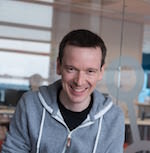Improving diversity in research software projects and events
Posted on 1 June 2017
Improving diversity in research software projects and events
 By Thomas Robitaille, Freelance, Alice Harpole, University of Southampton, Olivier Philippe, University of Southampton, Louise Brown, University of Nottingham, Clem Tanzi, qLegal, Mateusz Kuzak, Netherlands eScience Center.
By Thomas Robitaille, Freelance, Alice Harpole, University of Southampton, Olivier Philippe, University of Southampton, Louise Brown, University of Nottingham, Clem Tanzi, qLegal, Mateusz Kuzak, Netherlands eScience Center.
This post is part of the Collaborations Workshops 2017 speed blogging series.
There are diverse aspects of diversity, age, ethnicities, disabilities, and so on, however, the most commonly addressed one is the gender. Without taking into account the importance of one or the other aspect, gender has the advantage to be able to be easily assessable. It is easier to measure the situation to a standard and to compare the situation between different projects, careers, conferences, etc.
However, even if we take the sole issue of gender and its simplified version (binary distinction between male and female), it quickly appears that the context where software developments takes place is already defined by the gender issues at a higher level, such as the representativity in the education field or in the career plan. Therefore, a definition of a standard (directly assessable) is biased, and each event where we try to enforce the diversity should take that into account (see for instance the entrofy project in next section).
If a golden standard cannot be defined without taking into account the reality of the surrounding context of the event, it is simplified and allowed to generalise any definition of diversity.
Increasing diversity at events
One way to improve diversity at over-subscribed conferences is to set targets for the distribution of diversity along different axes, and then trying to select participants to meet those targets. The entrofy package has been developed to do exactly this, and allows the conference organisers to define axes such as gender, career state, subfield, geography, and will generate a participant list. This has been used for example for some of the Python in Astronomy conferences. This however only works if a conference has a limited number of spots and is oversubscribed. This also still requires the organisers to decide on target metrics, which is not necessarily straightforward for all diversity axes.
Once events are organised and participants are selected, it is important that there should be a clear code of conduct for events so that participants know that they will be going into a safe environment. Examples include the Collaborations Workshop 2017 code of conduct and SciPy conference code of conduct. Code of Conducts should make it clear what is not tolerated at an event and how to make the event more inclusive. They should also be made clear how to report issues and who will enforce the Code of Conduct. While Codes of Conduct are important for people to know that an event/project is a safe space for them, they are not a magic bullet to increase diversity but rather just one facet of the solution.
Increasing diversity in projects
The participants of open source projects often are lacking in diversity, with minority groups underrepresented. We believe that there are two main issues here: how to attract a more diverse range of participants in the first place and how to retain them (how not to discourage those from minority groups when they have started working on projects).
One way projects can attract participants from lesser-represented groups is by inviting people from organisations representing those groups, e.g. PyLadies, to workshops and collaborating with these groups to encourage their members to take part. This will help both make new participants feel more welcome and invited and help encourage existing contributors to be aware of diversity challenges. Another way projects can help attract a more diverse range of participants is by making explicit commitments to increasing the diversity of their project with targets and making their progress as transparent as possible.
In order to help retain project members from minority backgrounds, the project needs to be an inviting and safe place for everyone. As described above for the case of events, such an environment can be encouraged with a code of conduct, with commitments to take reports of code violations seriously and deal with them transparently. The Recurse Center code is a guide of how to create an inclusive working environment and contains many points we believe would be useful for addressing diversity issues in projects.


